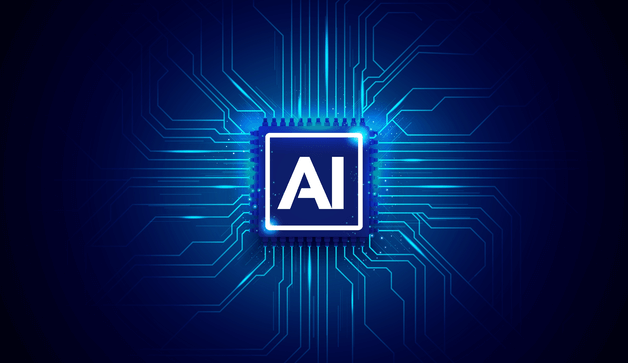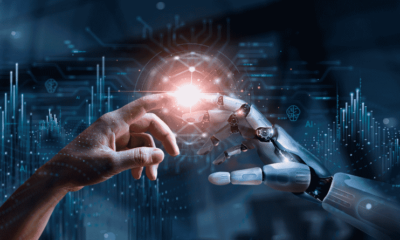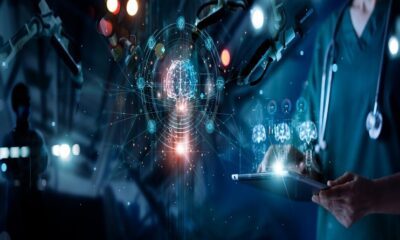
Without doubts, Artificial Intelligence (AI) has been the technological highlight of the decade. And even as we have entered a new decade, it appears that the excitement is going to remain for long.
Indeed, the benefits only increase more and more for organizations working to implement AI-based innovation into science fields, new industry areas, and several aspects of our everyday lives.
Here are 12 AI trends to know:
-
Artificial intelligence will increasingly help monitor and improve business operations.
With the initial robots, automation in the workplace was implemented largely to perform manual work such as production and manufacturing lines. However, contemporary software-based robots will help to perform repetitive yet vital jobs that we do on computers. All tasks including filling out forms, making reports, and creating, documentation, diagrams, and instructions can be automated by robots that monitor our every move and learn to complete these things for us more quickly and efficiently. This type of automation, known as robotic process automation (RPA), frees us from having to do routine administrative work that is time-consuming but necessary, so we can focus on more creative, strategic, complex, and interpersonal duties.
-
The process of real-time customization will become increasingly prevalent
The ability of Internet giants like Alibaba, Amazon, and Google, to provide tailored experiences and recommendations has inspired these current AI trends. The use of AI in supply-chain management enables vendors of goods and services to view customers in a 360-degree projection in real-time as they interact via web portals and mobile apps, improving their forecasts with each interaction.
-
As data gets more precise and available, AI becomes more and more helpful
According to survey results, the most significant hurdle for enterprises and organizations interested in utilizing AI-assisted automated decision-making is the quality of data readily available. However, as newer technologies and simulation approaches for real-world operations and mechanisms have developed over the years, increasingly accurate data has been available. Prior to these advanced simulations, it was nearly impossible for car manufacturers and other developers of autonomous vehicles to achieve hundreds of hours of driving data without any vehicles exiting the lab, which means there has been a tremendous reduction in costs while at the same time improving the data quality that can be accumulated.
-
Over time, there will be more gadgets running on AI-powered technologies
Advances in computing technology and software capabilities will allow us to see more tools, gadgets, and products using AI. Apps that feature AI-powered predictions on our phones, computers, and watches are already becoming prevalent in 2021. Following the continuous reduction in the cost of software and hardware, AI-powered devices will start to appear in our workplace tools, household appliances, and vehicles within the next decade. Advances in technologies like virtual and augmented reality displays, cloud computing, and the Internet of Things will increase the range and intelligence of smart gadgets during the coming year.
-
Collaboration between humans and AI rises
AI-powered tools and bots will become more and more common AI industry trends as the general public becomes accustomed to their presence in our everyday working routine. Tools will increasingly be created to allow us to maximize our human abilities, especially those abilities that can’t be effectively made with AI for now, like creativity, design, communication, and strategy skills. Super-fast analytics abilities, fed by enormous datasets that are updated in real-time, are employed to increase analytical competencies.
What this means is that many of us will have to acquire new abilities or adopt new methods for utilizing our existing abilities in conjunction with automated and software-based tools. By 2025, the IDC expects that 75% of firms will be retraining their employees to deal with skill gaps that result from the need to implement Artificial Intelligence.
-
AI continues to go toward the “edge”
For many of our everyday tasks, the AI used is largely implemented in the cloud – when we search the internet or browse through Netflix recommendations, the sophisticated, data-driven algorithms are run on powerful computers located in remote data centers, while our devices only serve as channels for information to flow through.
However, with the increasing efficiency and capability of these algorithms to run on low-power computers, AI is increasingly manifesting at the “edge,” near the spot where data is acquired and used. In 2021 and over the next several years, AI-powered insights will become more popular, especially as swift fiber optic and mobile networks expand.
-
AI is being increasingly applied to make movies, music, and video games
There are likely some things even in 2021 that are better handled by humans. There is almost universal agreement among people who have witnessed the state-of-the-art in AI-produced music, poetry, or narrative that the most advanced machines are still some ways from rivaling human-created works of art. Nevertheless, the potential of AI in the entertainment industry is expected to grow. In 2019, AI was used to bring actor Robert De Niro back to the age he was at during the 1970s, as shown in Martin Scorsese’s mob film The Irishman, and more and more trickery and visual effects will soon be created with the aid of AI.
The same is true for video games: in games that incorporate artificial intelligence, AI will be used to create demand, human-like opponents to play against, as well as to dynamically change the difficulty and degree of a challenge so that games will remain engaging for players of all skill levels.
-
In 2021 and beyond, artificial intelligence will be more and more prevalent in cybersecurity
It is becoming more and more critical that we protect ourselves from increasingly sophisticated hacking, phishing, and social engineering attempts, all of which are now powered by Artificial Intelligence and complex prediction algorithms. For a number of reasons, artificial intelligence (AI) is particularly well-suited for detecting suspicious patterns of digital transactions or activities that may be precursors to malicious conduct and raising alarms before a breach is possible and private data hijacked.
-
Many of us will engage with AI, perhaps in ways we don’t even realize
The truth be told, despite the tremendous investment in natural-language-powered chatbots used in customer support in recent years, many people are still able to tell if they are dealing with a robot or a person. However, it will become increasingly difficult to tell where a machine ends and a human begins, as datasets used to train natural language processing algorithms continue to evolve. Due to the application of deep learning and semi-supervised machine learning models like reinforcement learning, algorithms that seek to deceive us into believing there is a human on the other end of the discussion will grow more and more capable of fooling us by matching our speech patterns and inferring meanings from our individual language.
-
Even if we aren’t consciously aware of it, AI will see us
Additionally, it is only expected that companies that implement facial recognition technology will intensify their efforts as we head into the coming decade. This might include locations around the world, like China, where the government is considering implementing compulsory facial recognition technology for accessing amenities such as public transportation and communication networks. Increasingly, businesses and governments are making investments in behavioral analytics to identify us and describe our actions and behavior.
-
IT managers will be realistic about measuring the impact of AI
The following statistics are sobering. According to one MIT AI survey, just 2 out of 5 organizations report having experienced a rise in profits as a result of AI in the past 3 years. Given the ongoing investment, enterprises are making in AI capabilities, that will have to change this year.
To achieve this, one option is to adjust our approach for measuring results. Think reporting on things such as better processes, more efficiency, and satisfied customers. According to Jean-François Gagné, the co-founder and CEO of Element AI, a software firm, “CIOs will also need to continue to put more of their budgets against understanding how AI can benefit their organizations and implement solutions that provide real ROI or risk falling behind competitors.”
-
Precision in Healthcare
Precision medicine is the most common application of conventional machine learning in healthcare – making predictions on which treatment protocols have the highest chance of success for a patient determined by different patient characteristics and the context of the treatment. The vast proportion of ML, as well as accuracy medicine applications, demand a training dataset for which we know the outcome variable (for instance onset of illness). This is referred to as supervised learning. This is one of the significant trends in AI.
Final Thoughts
While these AI trends above hold tremendous promises for the global economy as a whole, there have however been a number of pushbacks against some of these AI trends. The burning question is whether humans are willing to ultimately embrace this intrusion into their everyday lives, following the benefits of convenience and enhanced security it will also bring. This is likely going to be an intensely debated matter for the rest of this decade.









